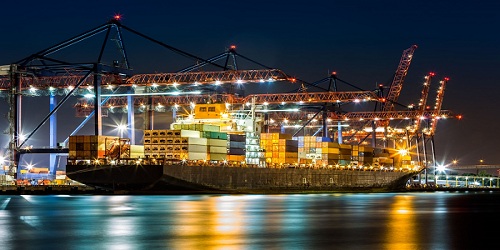Most Popular
-
Effective Predictive Maintenace in Marine Industry
It is a technique that helps us decide or predict the next maintenance cycle of the in-service machi.. -
Technology to reduce Ship fuel consumption
Fuel Oil Emulsion (FOE) technology by Blended Fuel Solutions burns more completely than unmodified f.. -
Maintenance of Emergency Generators on Ship
In an emergency situation every emergency equipment or system provided on board is an important life..
USE OF IoT IN MARITIME
– the maritime industry lags behind alternative transport industries in Despite the fact ships carried an estimated 9.6 billion tons of cargo in 2013 – around 80% of global trade by volume and over 70% of global trade by value terms of its use of information and communications technology, revealed through a study done by Ericsson.
With connected sensors and unified platforms designed to provide increased visibility for crews,the industrial “internet of things” has found its way to maritime industry. The ships have been equipped with modern data acquisition sensors that collect data. These sensors monitor everything from a ship’s speed to the temperature of its cargo, allowing for an optimized shipping ecosystem. By analyzing the data real time communication between ships, crews and communication headquarters.
IIOT HELPS MARITIME INDUSTRY THROUGH THE FOLLOWING MEANS
Route optimization:
Ships have been using high frequency radios to communicate with other vessels for years. This communication between ships is important in determining the most efficient routes and avoiding collisions. Unfortunately, this once-revolutionary technology lends itself to the potential of user error. Now, a ship’s position can be tracked live and location information can be sent to other ships on the same network. Captains and offices on land can track a ship’s movements using a laptop or tablet to analyze whether they should pursue more optimal routes. BastoFosen ferries use software called Route Exchange that displays an interactive map, which lets the company’s captains provide other seafarers their route intentions and provides an estimated time of arrivals in real time.
Asset tracking:
On a large scale, sensors help track the location of a ship at sea, on a smaller scale they are able to provide the status and temperature of cargo containers. One benefit is real-time metrics on refrigerated containers. These containers must be stored at constant temperatures so that perishable goods remain fresh. Each refrigerated container needs to be equipped with temperature sensors, a processing unit and a mobile transmitter. When temperatures differ from the optimal mark, the crew can be notified and begin looking into the problem. Additionally, these systems can monitor cargo and the ships as well as provide stakeholders the ability to obtain and analyze real-time data from production warehouse to final recipients.
Equipment monitoring:
The maintenance of an offshore supply vessel is seen as expensive and time consuming. It costs anywhere between $58,000 and $116,000 per day to have a vessel offline, according to “Big Data and Industrial Internet of Things for the Maritime Industry in Northwestern Norway,” written by researchers in that country. The paper noted a maintenance project involves dry docking a boat, pre-ordering parts and contacting personnel. In one example, a five-week operation was budgeted at nearly $3 million.
